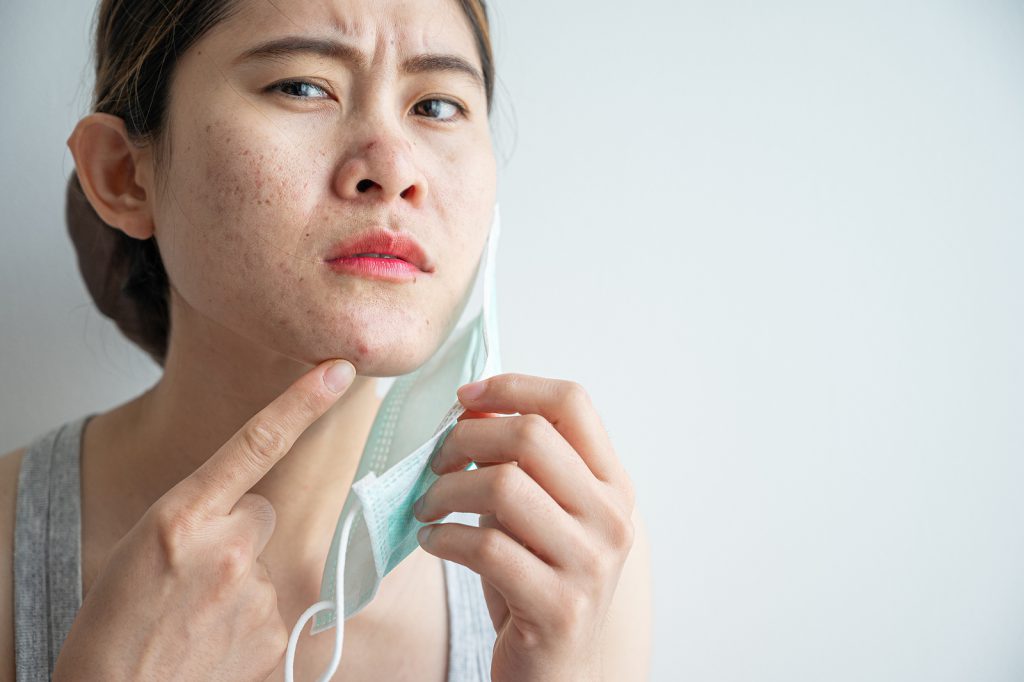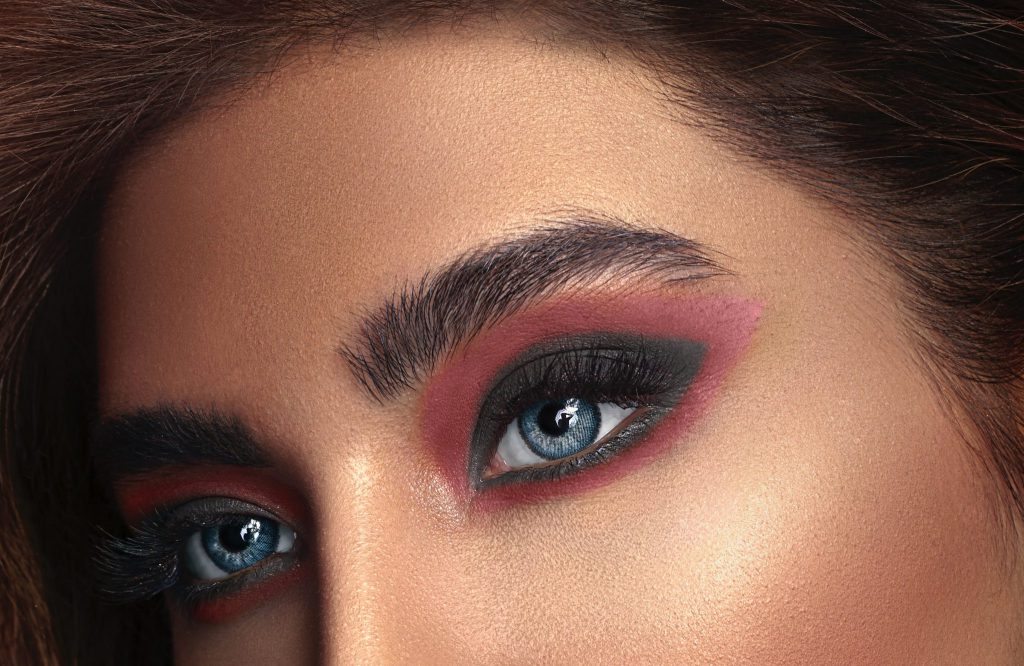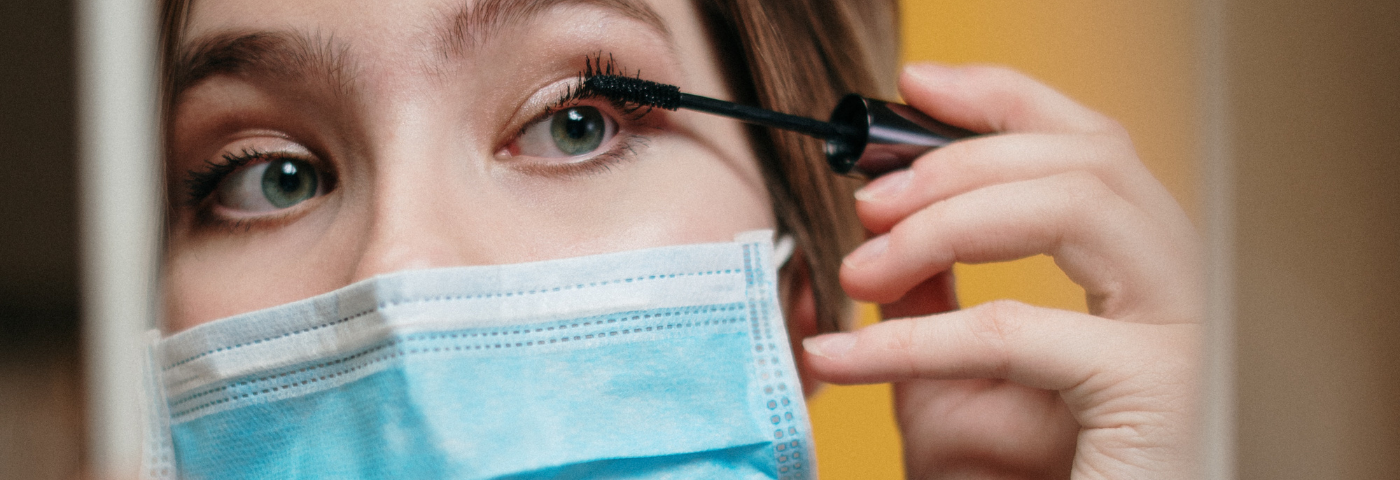There is no denying that the coronavirus pandemic has reshaped the beauty and personal care industry. Some major trends have been further propelled forward, and other new trends have caused a ripple effect across the industry almost overnight.
An all-encompassing move to digital communications with video conferencing now the norm means that people are looking at their faces more than ever before. This has led to a pandemic of ‘Zoom dysmorphia’, with half of Brits saying they are unhappy with how they look on Zoom video calls and one in four of them saying their biggest worry is the look of their skin.
The use of personal protective equipment has also presented newfound skin issues. These new and ever-changing needs recognised across the world has forced brands, formulators and R&D professionals to reconsider the ingredients and products that will best serve the current market.
The inception of ‘maskne’

One of the biggest behavioural changes witnessed across the world was the sudden use of face masks in an effort to slow the spread of Covid-19. For many countries, masks have become a legal requirement in public spaces, meaning wearing them has become a central part of our daily routines. This sudden and widespread trend has founded a brand-new buzzword within the beauty industry: maskne.
Through a combination of ‘mask’ and ‘acne’, the term maskne doesn’t only refer to spots and pimples as the word might suggest. Instead, maskne acts as an umbrella term for any skin issue – including redness, bumpiness or irritation – that develops on the face due to the act of wearing masks and other personal protective equipment.
One of the most common causes of maskne is clogged pores due to excess oil, bacteria and dead skin cells on the skin surface. Face coverings can also rub against the skin, and this friction leads to a particular type of acne called acne mechanica. According to dermatologist Angeline Yong, the “constant rubbing of the masks against our skin causes micro-tears, allowing easier entry for bacteria and dirt to clog up our pores”.
She adds that “Breathing into a mask also creates a hot and moist environment that leads to the build-up of sweat, oil and bacteria. Add on the fact that face masks are occlusive [designed to block things] by nature, and it’s a recipe for skin disaster.” It’s in these perfect conditions that microorganisms can grow and wreak havoc on the skin.
Jochen Zaumseil, L’Oréal’s Executive-Vice President in Asia-Pacific, said “Skincare has always been by far our number one [revenue driver], [but] of course that’s shifted even further [ahead] during the crisis.” This new demand from brands and consumers has required R&D professionals, formulators, and ingredient suppliers to quickly deliver new products to meet this trend.
A number of in-cosmetics exhibitors are rising to this challenge, showcasing their latest ingredients and products to fight maskne and discomfort caused by mask-wearing on the new in-cosmetics Discover platform. Vanderbilt Minerals LLC has launched VEEGUM EZ Magnesium Aluminum Silicate which is optimized for acid pH formulations and is rapidly hydrating for easy use as an acne treatment to fight maskne. It is designed to complement one of its most popular grades, VEEGUM Ultra, but with the removal of titanium dioxide which has become a concern for some of its customers.
Elsewhere, Evonik’s new ‘Maskne Concept’ focuses on solutions to bring back a healthy skin appearance with the power of gentle facial care as well as gentle cleaning for textile face masks to minimize or prevent ‘maskne’. Its skincare formulations for the delicate chin and mouth area include a number of different ingredients such as dermosoft® decalact sebum MB, a natural antimicrobial active ingredient that significantly reduces sebum production and fights the signs of blemish prone skin. It also includes lotions that will balance the skin and protect the barrier such as SKINOLANCE® which strengthens the natural microbial shield with a probiotic lactobacillus extract and promotes the natural balance of the skin flora.
Less of the lips, more of the eyes

The “Lipstick Index” – a term coined by former Estée Lauder chairman, Leonard Lauder, during the 2001 recession – is a commonly used phrase during periods of economic strife as it refers to the resiliency of lipstick – and cosmetics in general – as it is seen as an affordable luxury during tough times. But what Leonard had not accounted for was that economic turmoil might come about because of an infectious illness. As such, with the widespread use of face-coverings eclipsing the view of the lips, the index has become somewhat redundant.
While the skincare market has seen an uplift, the make-up sector has noted a significant drop in popularity. During the 2020 lockdown, demand for products often seen as staples such as foundation and lipstick was down by more than 70%. “Due to Covid-19, consumers’ values and behaviours around the world are changing dramatically… frequencies to use make-up like lipstick are decreasing as people go out less and wear masks,” says Masahiko Uotani, CEO of Shiseido.
However, consumers are looking for new ways to express themselves through facial make-up. Beauty influencers are focusing their attention on mask-friendly tutorials, with the hashtag #MaskMakeup amassing more than 53 million views on TikTok. According to Kantar, eye make-up sales shot up 204% year-on-year for the three-month period ending June 28 2020. Many beauty brands reported an uptick in sales; My Beauty Brand reported a 480% increase for its eye paint since the start of lockdown, while popular tweezer brand, Tweezerman reported a 331% rise in eyelash curlers compared to the same period last year. “Obviously, when you can’t see the lips, eyes are super important,” says Jean-Paul Agon, CEO of L’Oreal. Jochen Zaumseil, L’Oréal’s Executive-Vice President in Asia-Pacific added that “The eyes are the most visible part of your face now, [so] mascara, eyeliner, are doing very well.”
The in-cosmetics Discover platform is home to a number of new product launches meeting this new demand. Gattefossé has launched Emulium® Illustro – a water-in-oil emulsifier that is highly compatible with pigments and UV filters as well as a wide range of cosmetic ingredients. It can be applied in colour cosmetics applications such as highlighters and eye products, delivering a pleasant sensoriality. Vanderbilt Minerals LLC has also launched VEEGUM HV which can be applied in a liquid eye shadow formulation to help eyes stand out behind a mask.
The new normal
Despite the challenges of the past year, the industry – from lipstick and colour cosmetics to skincare and haircare – is expected to see growth as life returns to normal. “People will be happy to go out again, to socialise,” says L’Oréal’s CEO. “This will be like the roaring 20s, there will be a fiesta in make-up and fragrances. Putting on lipstick again will be a symbol of returning to life.”
Indeed, this is what has been witnessed in China which is several months ahead of the West in its recovery from the coronavirus pandemic. According to L’Oreal, 34% of Chinese women wore make-up in February 2020 – during the peak of the lockdown – which increased to 68% in late June to early July. Notwithstanding, the company reports consistent demand for products that show above people’s face masks. Even post-pandemic, face masks may become a part of the everyday routine across the world and so our make-up – and the ingredients that go into them – must reflect this.
Want to know more about maskne and its effects on skin? Have a look at Stacey Fraser’s technical article on ingredients that support stressed skin.


